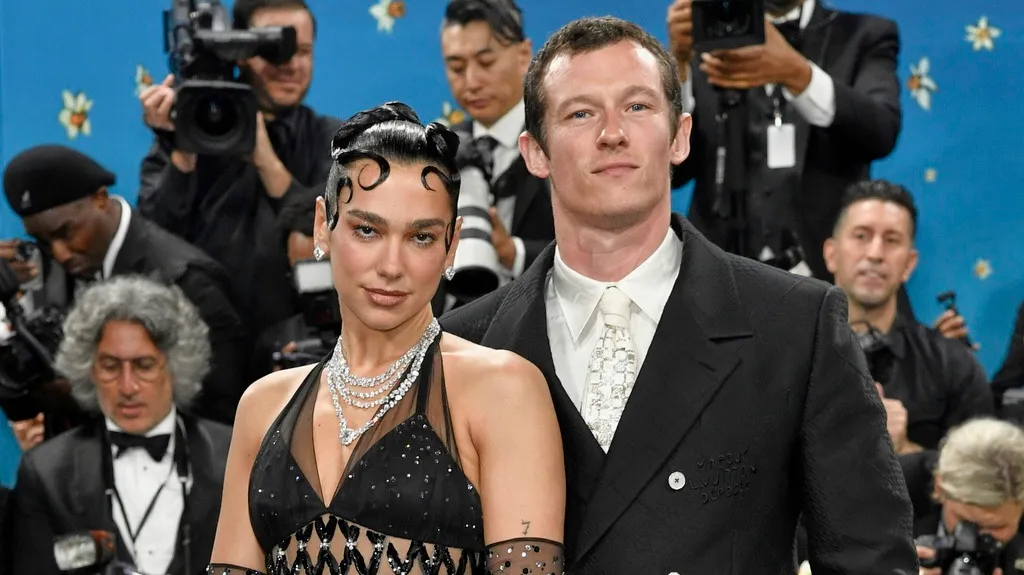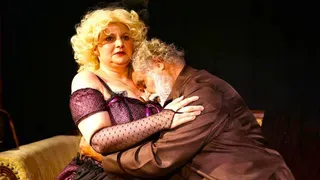January 20, 2014
The Haberdasher: A Tale of Derring-Do
Michael Cox READ TIME: 5 MIN.
On the night that "The Haberdasher: A Tale of Derring-Do" had its first public reading, the artistic director of Argos Productions, Brett Marks, was having a rehearsal in the other room. After the show Brett confronted "The Haberdasher's" writer Walt McGough.
"You interrupted my rehearsal," Brett said to Walt.
The halls of Boston Playwrights' Theatre, where so many talented writers have premiered their plays, are tight and close, lined with the faces of so many great performers from the Boston stage frozen in moments of performance. In a way they're setting a bar for the new work to come into that space, but in a way they may be looking down from those walls and judging, just a little.
Before Walt could say a word to apologize or defend himself Brett went on, "I've never heard an audience laugh so hard at a play reading before... I want you to send me that script." So began the collaboration between this director and playwright that has materialized in Argos current production.
"It's a fun, dumb show," says Walt.
A few years ago when he was in Chicago, Walt was in a production that had a lot of action where each actor not only plays multiple characters but also rapidly changes between them. It was "just a straightforward comedy," uncomplicated and the most fun he'd had in the theatre. "The Haberdasher" was an attempt to recreate that ebullience. Still, it's hard work to make a show that's seriously dumb and fun.
His first vision of the play was easy to produce and fit to a format that many have done before: "Two men in suits, playing a bunch of characters." Still, Walt's playwriting MO has always be to start with a genre and then "twist it," maintain the structure of the form but defying expectation.
The first choice was obvious: The men should be women. Women who have no need to disguise their ridiculousness by pretending they are men (as Shakespeare would have done). Regardless of what kind of costume they are wearing, the female characters are solidly and proudly female. Furthermore, these women can appreciate and acknowledge their desires without pursuing or requiring a man to validate them.
Second, just because the show involved a simple set and minimal actors didn't mean that it had to be all talking. Walt filled the show with swashbuckling spectacle.
"This show is a mixture of every high romance thing I've ever read or absorbed," said Walt. "I've thrown it all into a blender. It's all pretty pastiche-y."
Woman who throw themselves valiantly into a life of adventure may be all good and well for characters in a play, but the female collaborators in "The Haberdasher" proved to be at least as spirited and bold and the lives they put on stage.
In the play, Kaitee Tredway's character (named Actor One and playing many roles) charges into the "man's world" of haberdashery, but with just as much gusto the actress charged into her role just 10 days before the show opened when the woman who had been rehearsing the part broke her arm.
Trained as a dancer and experienced in stage combat, Kaitee learned quickly. Still, perfect timing and precision swordsmanship are integral to a comedy such as this, so she had a tremendous amount of work to do.
This is where Hannah Husband (Actor Two) stepped in. Hannah is known her rounded characters and sharp comic delivery, as Boston audience witnessed in The Lyric's production of "By the Way, Meet Vera Stark," but she also stepped up to the plate as the fight captain and stayed after hours to help train Kaitee.
Then there was the issue of "that profession." Walt poured over books not only to learn something about the trade, but to figure out a time period to set the play in. He finally threw up his hands and decided to set the play in "Disney France," that timeless world like the one that "The Princess Bride" takes place -- a place where everything seems historic but it's hard to classify the actual time period. We need only think of it as "the olde romantic time."
Mark Estano masters the playing of this classical modernity, moving seamlessly from sincere character actor and "straight man" to wildly exaggerated drag-comedy.
Finally, Brendan Mulhern is so specific in each of his characters he has to fight to keep from stealing the show. Though the audience is thoroughly delighted by him, they are delighted by the way he works with ensemble, and not because he stands apart from it.
"The rehearsal process itself -- other than the pace we did it in -- was very smooth. Everybody came in ready to work and game for anything," said Walt. "Don't get me wrong; it was a huge challenge. But thanks to Brett and all the actors, there's always been this overriding sense of, 'Holy shit, I can't believe we just pulled that off.' "
Argos productions believes the best way for new playwrights, and the theatre scene in general, grow is through production.
"There's such an energy and excitement about figuring out what the Boston theatrical voice is -- what it means to create theatre from here," says Walt. "It feels like something an individual artist can take part in and have an impact on. I think the first moment I felt like I was really from Boston, instead of just living here, is when I saw Kristen Greenwich's "Luck of the Irish" at the Huntington -- sitting in a theatre packed to the gills with people watching a show about Boston. It was just so intense that it sold me. I wasn't expecting to get as hooked-in and in love with the scene as I am now."
Playing through Jan. 25th at the Boston Playwright's Theatre.
For more information go to www.argosproductions.com.




